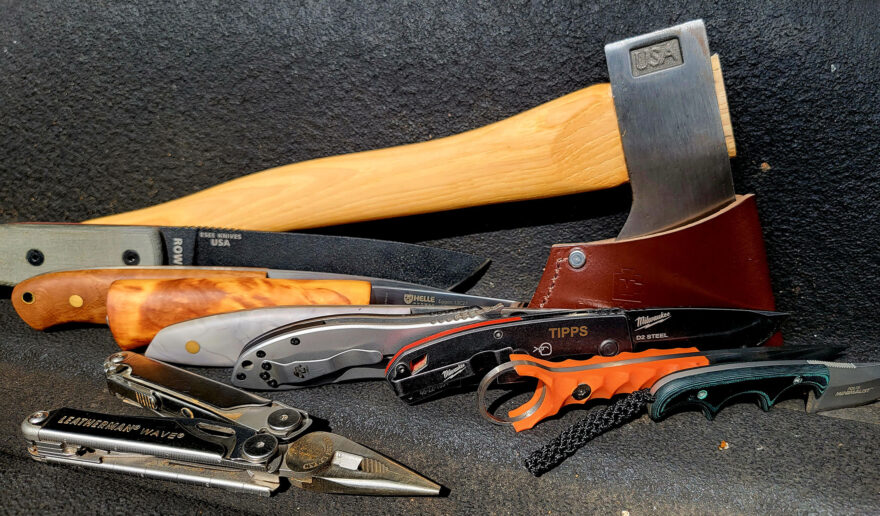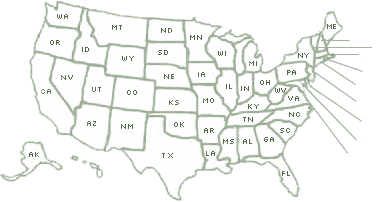
Image by Ryan Tipps
Most would agree that the camp knife is the overall best camping tool one can have — this is due to its myriad applications, from cutting twigs, splitting small logs, a multiple of slicing needs around the camp kitchen, preparing kindling for the campfire, creating components for a survival shelter or simply just relaxing while carving a totem stick. It’s the most versatile piece of camping equipment we can use.
From folding pocket knives to many-bladed Swiss style, and multi-tools to Rambo-esque Bowie knives and machetes, the size, weight and blade shape all affect how well a knife will best perform a desired function. For most practical uses around camp and in the backcountry in general, a 4-inch to 5-inch bladed, full-tang knife (blade and handle one solid continuous piece of steel), works for most all practical applications, even splitting smaller diameter log (up to 2 inches to 3 inches when using a baton to hammer the blade down through the splitting wood).

Illustration courtesy of Tom Watson
For splitting larger wood consider a hatchet or axe; the hatchet being more practical and adequate for short term camps and when processing massive amounts of firewood isn’t necessary. Hatchets are lighter, take up less space, and can be used more easily to trip off branches or as a hammer to pound stakes.
Saws are generally more efficient at cutting through larger logs than the more arduous efforts needed for an axe. They are especially good at quickly cutting cleanly through downed and dead trees. That’s pretty much their claim to fame as they can’t split or pound. They are perhaps best considered when part of a combination hatchet/saw kit.

Illustration courtesy of Tom Watson
Bow saws are great wood-cutting tools, but unless they fold down, they are awkward and take up space. If, however, the saw blade folds or otherwise stores in its own handle or within the handle of a hatchet, you double your cutting/pound options into one tool. Folding saws do a pretty good job at slicing through diameters up to about 5 inches to 6 inches in diameter. You can quickly cut campfire sections of wood as you saw off chunks all the way down a deadfall limb.
A couple of words of caution: combo saw/hatchets aren’t always comfortable to handle and aren’t always as sturdy/effective at chopping as are regular hatchets.

Illustration courtesy of Tom Watson
If you have an adequately-size knife for spitting arm-sized fire wood, and you don’t need/want to carry a hatchet just to pound stakes, consider a compact pocket saw. Typically the better saws have a four foot chain, loaded with 36 wood-biting teeth — attached at each end by a comfortable and secure-grabbing handle. Quality and effectiveness vary by number of teeth, hardness of steel and the ease and security of the handles. The compactness of the pocket saw when coiled and stowed in its case makes it especially handy for processing wood at camp more easily and safely that when using a hatchet or axe.

Illustration courtesy of Tom Watson
Knives and hatchet/axes are the easiest to sharpen — a key concern on an extended trip or when massive amounts of wood are to be processed — and a sharpened blade is also safer that a dull blade that can have a tendency to not bite and skip off the surface unexpectedly.
Depending on your style of camping and your mode of transportation in the back-country, a combination of a pocket knife, full-tanged camp knife, combo hatchet/saw or simply a pocket saw, may be the most practical inventory of cutting tools you’ll want to carry.
Be Safe; Be Smart; Have Fun out there.
Tom Watson is an award-winning outdoor safety and skills columnist and author of guide books on tent camping, hiking and self-reliant survival techniques. His website is www.TomOutdoors.com.
 Your Privacy Choices
Your Privacy Choices


 The
The